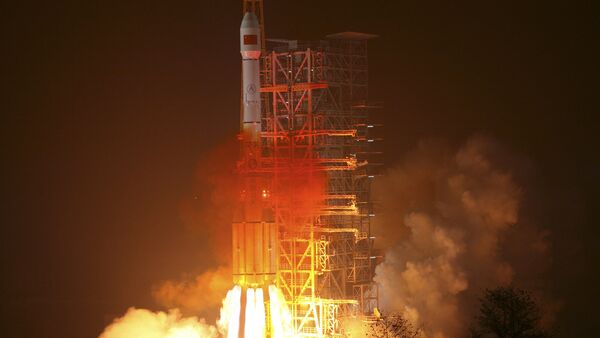The new satellite carries hyper-sensitive equipment and aims to track gravitational waves, or ripples in space-time traveling at light-speed across the universe.
The ripples, first predicted in theory by physicist Albert Einstein, are produced by a variety of phenomena involving mass moving at very high speeds, including a star exploding in a supernova, two big stars orbiting each other or a collision between two black holes, according to the US space agency NASA.
The waves squeeze and stretch matter as they ripple across the universe - something the Taiji-1 satellite, launched by China on August 31, hopes to detect with better accuracy and subtlety than ever before.
“This is the first step of China’s space-based gravitational wave detection,” Xiangli Bin, vice president of the Chinese Academy of Sciences (CAS), told Xinhua on Friday. “But there is still a long way to go to realize detecting gravitational waves in space. Chinese scientists will continue to contribute Chinese wisdom to the exploration and human progress.”
China's first satellite specially designed for #gravitationalwave-probing technological experiments in space has been officially named "Taiji-1," after the satellite successfully completed its Phase 1 primary tests in orbit. pic.twitter.com/0AIcMMRbDB
— Global Times (@globaltimesnews) September 20, 2019
Wu Yueliang, chief scientist of the Taiji program and an academician at CAS, told Xinhua that because Taiji-1 is space-based, its detection abilities are far more sensitive than a ground-based observatory. That will enable the satellite to detect lower frequencies and peer further into the universe - and thus the past - and to look at celestial objects with greater mass.
"The accuracy of the gravitational reference sensor on the satellite reached ten billionths of the magnitude of the earth's gravitational acceleration, equivalent to the acceleration produced by an ant pushing the Taiji-1 satellite," Wu explained, noting the probe’s laser interferometer could measure a displacement as tiny as 100 picometers, equivalent to the size of a single atom.
Einstein predicted the phenomenon must exist when he theorized the fundamentals of special relativity in the early 20th century, but the waves’ existence wasn’t confirmed until 2015, when the Laser Interferometer Gravitational-Wave Observatory (LIGO) in the United States detected a black hole collision that happened 1.3 billion years ago, NASA noted. Since then, perhaps 41 gravitational waves have been observed, although all but 11 have yet to be confirmed as such.
Taiji-1 is just the first of several Chinese satellites that will study gravitational waves, with others to be launched in 2023 and 2033, Xinhua noted. In a similar vein, the European Space Agency has decided to launch the Laser Interferometer Space Antenna (LISA) trio of satellites in 2034. The LISA Pathfinder was launched in 2015 to demonstrate the mission’s feasibility.



